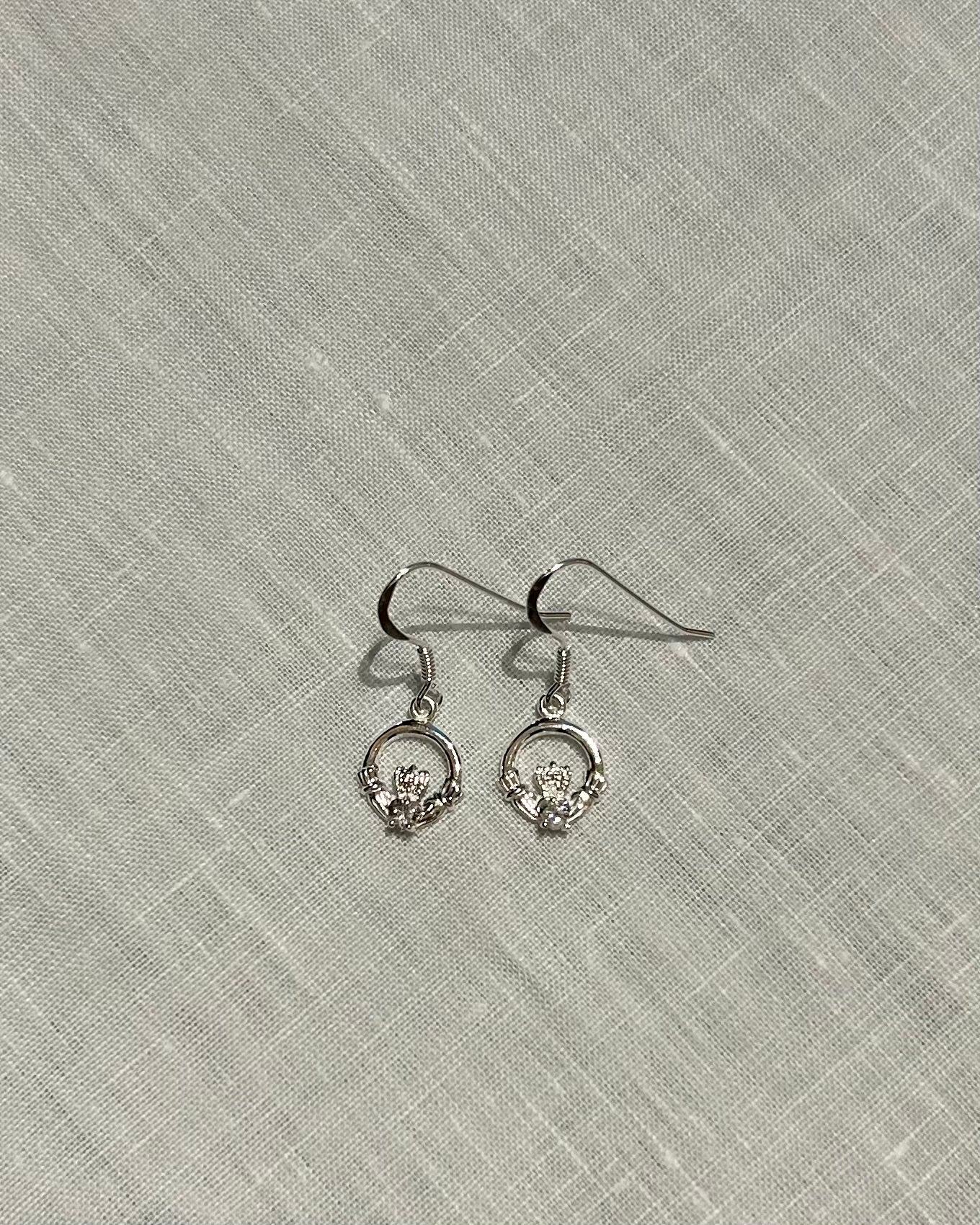Kilkenny Silver
Sterling Silver Celtic Earrings: Celtic Claddagh Ring
Sterling Silver Celtic Earrings: Celtic Claddagh Ring
Couldn't load pickup availability
The Celts first arrived in Ireland 2,500 years ago from Europe, bringing with them a wealth of art and culture. Their legacy lives on today in the Irish Hallmarked Sterling Silver Celtic Jewellery Range from Kilkenny Silver. These Celtic designs are on sterling silver chains that are 18 inches in length.
A Claddagh ring is a traditional Irish ring in which a heart represents love, the crown stands for loyalty, and two clasped hands symbolize friendship.
The design and customs associated with it originated in Claddagh, County Galway. Its modern form was first produced in the 17th century. The Claddagh ring belongs to a group of European finger rings called fede rings. The name derives from the Italian phrase mani in fede ("hands joined in faith" or "hands joined in loyalty"). This group dates to Ancient Rome, where the gesture of clasping hands meant pledging vows. Cut or cast in bezels, they were used as engagement and wedding rings in medieval and Renaissance Europe to signify "plighted troth".
In recent years it has been embellished with interlace designs and combined with other Celtic and Irish symbols, corresponding with its popularity as an emblem of Irish identity.
There are many legends about the origins of the ring, particularly concerning Richard Joyce, a silversmith from Galway circa 1700, who is said to have invented the Claddagh design as we know it. Legend has it that Joyce was captured and enslaved by Algerian Corsairs around 1675 while on a passage to the West Indies; he was sold into slavery to a Moorish goldsmith who taught him the craft. King William III sent an ambassador to Algeria to demand the release of any and all British subjects who were enslaved in that country, which at the time would have included Richard Joyce. After fourteen years, Joyce was released and returned to Galway and brought along with him the ring he had fashioned while in captivity: what we've come to know as the Claddagh. He gave the ring to his sweetheart, married, and became a goldsmith with "considerable success". His initials are in one of the earliest surviving Claddagh rings.


